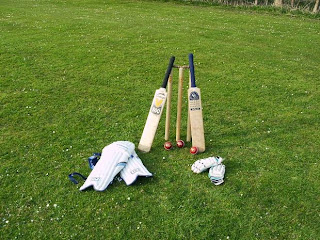On this date in 1926, Red telephone boxes first came into operation in Britain. Here are ten facts about them:
- The man responsible for the design was Sir Giles Gilbert Scott, an architect who also worked on Liverpool Cathedral, Cambridge University Library, Waterloo Bridge and Battersea Power Station.
- His design wasn't the first one to be used. The original design was slightly different. It was Grey and red and made from concrete. This design was called a K1 (Kiosk 1). Very few of these are left but there is one in Trinity Market in Kingston-upon-Hull, which is still in use.
- Scott's design was the K2, the result of a competition held in 1924 to come up with a design of telephone box that would be acceptable to the London Boroughs, who hadn't taken to the K1 and resisted any efforts to have them installed in London's streets. Wooden prototypes of the entries were put into public service at under-cover sites around London. Only one of these is known to survive, in the left entrance arch to the Royal Academy.
- The K2 kiosks didn't look exactly as Scott envisaged them. He thought they should be made of mild steel and painted silver with a "greeny-blue" interior, but the Post Office decided that they should be red (because they'd be easier to spot) and made from cast Iron. For a long time it was only in London that this style of phone box was installed. Everywhere else still had the K1 design.
- That changed with the introduction of a similar model called the K6 in 1936 which was smaller and cheaper to manufacture. It was designed to commemorate the silver jubilee of King George V, so was known as the "Jubilee" kiosk.
- The paint colour used most widely today is known as "currant red" and is defined by a British Standard, BS381C-Red539. This colour was first used in 1968 on the K8 model. Previous models were a slightly darker red.
- The privatisation of British Telecom in 1982 was the beginning of the end for red phone boxes. BT wanted to get rid of them in favour of open sided designs that wheelchair users could use, and which were cheaper to clean and maintain. They also wanted to paint any remaining ones Yellow, to reflect BT's new corporate colours. There was a public outcry, questions in Parliament and a Daily Mail campaign against what they dubbed "The Yellow Peril". BT were adamant that few people used the red boxes and they didn't meet customer needs anymore. Increased ownership of mobile phones has decreased demand for public phones, too. In 1980 there were 73,000 red phone boxes in the UK - now only 11,000 remain.
- Some survive because they have been put to other uses, such as tiny Libraries or art galleries. One has been turned into a defibrillator station, and another a public shower. From October 2014, several of London's disused K6 telephone boxes were painted Green and converted to free mobile phone chargers named Solarboxes. Many were sold off and bought by individuals to do whatever they like with. A few have been turned into art installations - in Kingston upon Thames, for example, a number of old K6 boxes have been used to form a work of art resembling a row of fallen dominoes.
- The traditional red phone box may be disappearing, but you can still experience what it's like to stand in one in the virtual world, thanks to this website: https://www.360cities.net/image/red-phone-box#-541.02,-12.03,70.0
New!
Jack Ward, President of Innovia, owes his life twice over to the enigmatic superhero, dubbed Power Blaster by the press. No-one knows who Power Blaster is or where he comes from - and he wants it to stay that way.
Scientist Desi Troyes has developed a nuclear bomb to counter the ever present threat of an asteroid hitting the planet. When Ward signs the order giving the go ahead for a nuclear test on the remote Bird Island, he has no inkling of Troyes' real agenda, and that he has signed the death warrants of millions of people.
Although the island should have been evacuated, there are people still there: some from the distant continent of Classica; protesters opposed to the bomb test; and Innovians who will not, or cannot, use their communication devices.
Power Blaster knows he must stop the bomb from hitting the island. He also knows it may be the last thing he ever does.
Meanwhile in Innovia, Ward and his staff gather to watch the broadcast of the test. Nobody, not even Troyes himself, has any idea what is about to happen.
Part One of The Raiders Trilogy.











